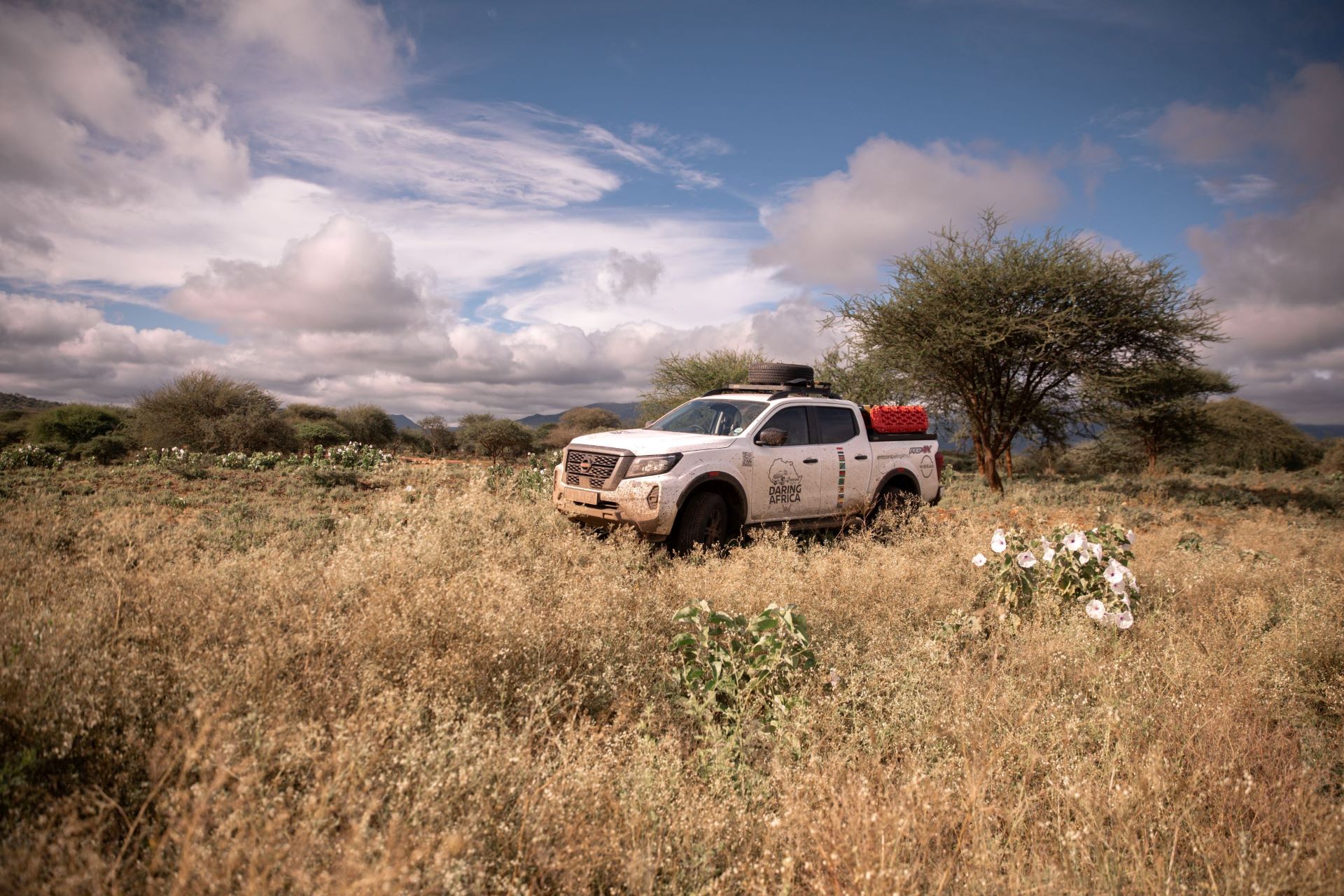SA’s 2005 Car of the Year gets a turbodiesel partner
The Volvo S40 range, riding the crest of the wave after its 2.4i derivative was crowned as South Africa’s Car of the Year for 2005, has received another boost with the addition of a powerful turbodiesel engine in the 2.0D.
Volvo Car South Africa has reached a record monthly sales total of 604 in March 2005, and the local sales company of this Swedish brand expects even better figures when the new turbodiesel S40 2.0D hits the dealerships towards the end of May.
In a fast-growing diesel car market the qualities of this smooth four-cylinder turbodiesel and the much-acclaimed design features of the S40 promises to be a popular combination for South African customers. The 2-litre turbodiesel engine has also been added to the Volvo V50 range, in the V50 2.0D (see separate release).
Diesel-powered vehicles have shown a tremendous growth as a portion of the total South African passenger car market. In 1995 diesel-powered passenger vehicles accounted for a mere 1% of sales, however, by January this year it had increased to 13%.
This occurred amidst a positive sentiment where total car sales increased by 20% for the full year 2004. Traditionally SUVs dominated the market for diesel-powered cars, but there has been a marked shift to not only sedans, but also hatch-backs, estates, MPVs and numerous entry-level variants.
It is against the backdrop of this growing demand that Volvo Car SA now introduces its first compact diesel engine in the local passenger vehicle market, joining the tried and tested five-cylinder D5 engine that was launched in 2003 in the S60 and last year in the XC90.
Frugal turbodiesel widens range of S40 engines
The new four-cylinder, 2-litre turbodiesel engine extends the engine range in the South African S40 model line-up to three.
The 100 kW, 320 Nm direct diesel injection engine in the Volvo S40 2.0D now supplements the normally aspirated 2.4-litre (125 kW and 230 Nm) launched last year in the 2.4i model and the turbocharged 2.5-litre (162 kW and 320 Nm) in the flagship S40 T5 model.
Both petrol engines have a five-cylinder in-line configuration, opposed to the four-cylinder in-line turbodiesel which is also mounted transversely under the bonnet to drive the front wheels through a six-speed manual gearbox (not derived from the S60 R, as is the case with the six-speed gearbox in the S40 T5). No automatic gearbox is available in the S40 2.0D.
If one had to single out the most outstanding features of the new turbodiesel, it is probably its frugal fuel consumption and excellent torque delivery. The S40 2.0D recorded a best consumption figure of 5,7 litres per 100 km in a mixed cycle of urban, highway and country roads. This is largely a result of the abundance of torque, with 320 Nm already available at 2 000 rpm.
Service intervals for the S40 2.0D are scheduled at every 20 000 km, but a change of oil and oil filter takes place every 10 000 km.
As with all other services the oil and filter changes are covered by Volvo Car SA’s 5 year/100 000 km service and maintenance plan.
(For technical details on the turbodiesel engine see separate press release.)
Cleaner emissions due to particulate filters
Although emissions of carbon dioxides (CO2) from a diesel engine are 20% lower than from a petrol engine, emissions of particulates are a traditional problem when driving on diesel.
While emissions of particulates have been significantly reduced by approximately 90% over the past 20 years, new technology now further reduces the remaining particles significantly by means of a filter.
With the particulate filter introduced in the four-cylinder Volvo turbodiesel engine in the S40 and V50, these models meet the Euro 4 regulations by a broad margin. Even without the particulate filter, the engine has been developed to minimise emission of particulates and already met the legal requirements valid until 2006.
The particulate filter operates together with an additive that is added from a separate tank to the diesel fuel. The filter only has to be cleaned and/or changed approximately every 100 000 km. The additive is a fluid with a catalyst based on cerium which stimulates and secures the process of burning off soot at all engine loads and speeds.
Centre panel a design icon of Volvo S40
The exterior of the new Volvo S40 that was launched in 2004 in South Africa is an evolution of Volvo’s modern body design, while the interior is something of a revolution. The most distinctive new feature is the unique, super-slim free-floating centre stack that elegantly links together the tunnel console with the instrument panel.
This is an entirely new solution in the car industry, specially developed for the Volvo S40 and previewed before in the Volvo VCC (Versatility Concept Car).
The controls in the new centre stack have an ergonomic and functional design. Most are used for several functions, in a logical and convenient way. The top half of the control panel is used to operate the audio system and the optional integrated telephone, while the lower half controls the climate system.
Behind the centre stack there is a practical storage compartment for personal items, easily accessible from both sides.
Shorter, wider and taller
The Volvo S40 is shorter, but wider and taller, than its predecessor, creating more interior space. The bonnet is short and there is a pronounced cab-forward profile.
Viewed from above, the body resembles the shape of a boat hull, with a rounded prow, a broad midship section and a narrowing stern. Together with the broad shoulders, this hull shape forges a compact and athletic stance, and contributes to the car’s excellent aerodynamics.
The track and wheelbase have been extended, virtually putting a wheel at each corner. This contributes to the sporty appearance and gives the car stable on-the-road behaviour. The long wheelbase also makes it possible to fit conveniently wide rear doors.
The doors of the Volvo S40 are convex in profile, unlike the concave shape of the doors on the larger Volvo models. This convex curvature reinforces the compact appearance and enhances the cabin’s width.
New, patented frontal structure with several crumple zones
The Volvo S40 is a compact car with extremely high safety levels – both protective and preventive. Volvo’s intention was to reach the same high safety level as in the large Volvo models.
The frontal body structure of the Volvo S40 is divided into several zones, each with a different task in the deformation process. The outer zones are responsible for most of the deformation. The closer the collision forces get to the passenger compartment, the less the materials used deform. The intention is that the passenger compartment should remain intact in most collisions.
In order to give each zone the relevant properties, different grades of steel are used in different areas. Four different steel grades are used. In addition to conventional bodywork steel, three different grades of high-strength steel are employed: High Strength Steel, Extra High Strength Steel and Ultra High Strength Steel.
The zonal system enables the collision forces to be absorbed in a highly ingenious and effective manner.
Compact engines contribute to crash safety
Owing to efficient packaging, the engines in the Volvo S40 have been able to be made slimmer. Since the engines are installed transversely, the reduced width creates greater space between engine and passenger compartment for the absorption of energy in a frontal collision.
The Volvo S40 also shares the same type of interior safety system as found on the larger Volvo models, including WHIPS (Whiplash Protection System), SIPS (Side Impact Protection System), side-impact airbags and inflatable curtains. The new Volvo S40 is 54 mm wider than its predecessor. This creates added space for deformation in a side impact.
Protection for other road users
The design of the Volvo S40 has a front characterised by clean, smooth surfaces and rounded corners. The curves and panels are shaped to help reduce the risk of injury to pedestrians and cyclists in the event of an accident. Furthermore, the front has an energy-absorbing structure ahead of the bumper so as to help reduce the risk of leg injuries.
The bonnet and front wings are designed to absorb collision energy. This helps reduce the risk of head injuries.
Stable driving properties
The body of the Volvo S40 is 68% stiffer than that of its predecessor, thanks to advanced body design. This torsional rigidity contributes to stable, predictable and consistent behaviour on the road. The car’s chassis design, with its broad track and long wheelbase, also has a positive effect on stability.
The suspension is independent all round, with spring struts at the front and a multilink system at the rear. The rear suspension provides a certain degree of passive steering to counteract any tendency to skid.
The Volvo S40 is equipped with:
-
Stability and Traction Control (STC), an anti-spin active safety system, as a standard feature in the S40 2.4i and 2.0D; or
-
DSTC (Dynamic Stability and Traction Control), which uses inter alia the advanced braking system to correct the car’s progress and poise if there is any sign of it starting to skid. This is a standard feature in the S40 T5 and can be ordered as an option for the 2.4i or 2.0D.
The S40 has extremely powerful ABS brakes – with electronic brake-force distribution to the rear wheels and automatic panic-braking assistance – EBA (Emergency Brake Assistance). The front wheels feature ventilated discs that vary with engine power.
Unique Intelligent Driver Information System (IDIS)
Volvo Car’s unique Intelligent Driver Information System (IDIS) is activated in the S40 if the car is ordered with the optional, factory-fitted integrated mobile telephone.
IDIS is a car industry innovation, first shown in the new Volvo S40. The system, influenced by fighter aircraft technology, helps the driver to avoid being distracted while driving. In demanding situations, such as overtaking or braking, signals from the integrated GSM telephone and certain peripheral information are delayed until the situation is calmer.
Chassis with large-car properties
The new Volvo S40 has been developed in the same spirit as the Volvo S60 and S80. The experience gained from the advanced Volvo S60 R formed the basis for the new compact model.
The chassis technology was also obtained from the larger Volvo models. Independent suspension with a multilink system at the rear provides a superb combination of comfort and consistent response. The wider track and longer wheelbase, compared to the previous Volvo S40 model, also contribute to the car’s stable behaviour on the road.
The steering is electro-hydraulic, with distinct and controlled steering feedback.
Careful selection of materials and technologies
As with other Volvo models the manufacturing methods for the S40, as well as the materials and substances used in its production, are selected so as to minimise the risk to health – both to production personnel and to people outside the plant.
And, as with all Volvo cars, the S40 is designed for a high recycling rate to conform with one of Volvo Cars’ core values – care for the environment.
It is with this core value in mind that the S40, and the V50 sportswagon, have been fitted with a particulate filter and catalytic converter which delivers the cleanest possible emissions from the turbodiesel engine.


